- UID
- 5084
- 注册时间
- 2014-4-22
- 在线时间
- 小时
- 最后登录
- 1970-1-1
- 精华
- 阅读权限
- 30
- 听众
- 收听
|

前几周我们给大家推出了 Why do we have weather on earth 系列专题,本周我们将给大家推出机场标示以及灯光的有关内容。

本期我们还邀请到了北航飞院 2017级飞行技术学员,美国 UND 菲尼克斯校区学员,中国国际航空飞行员,洪华逊师兄,分享他的飞行手记。
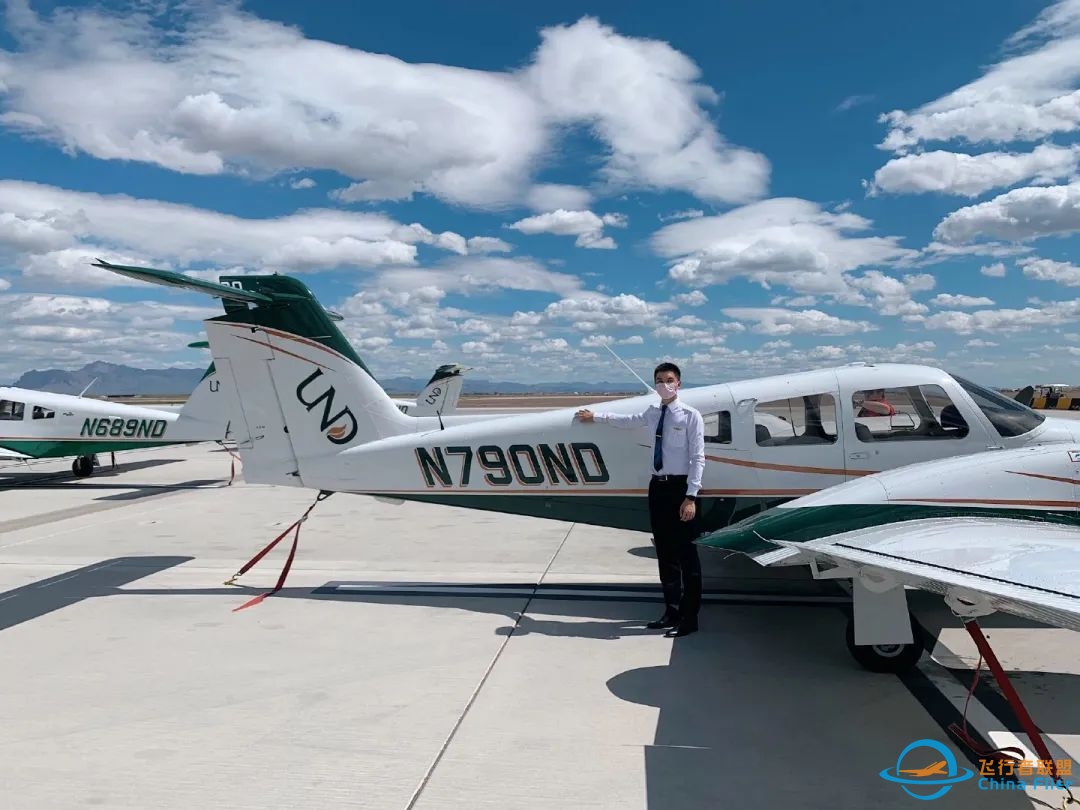

作者简介

马钰辰
飞行学院 2019级飞行技术专业学员
北航飞院 CFC 模拟机实验室教员
北航飞院 CFC 编辑部成员

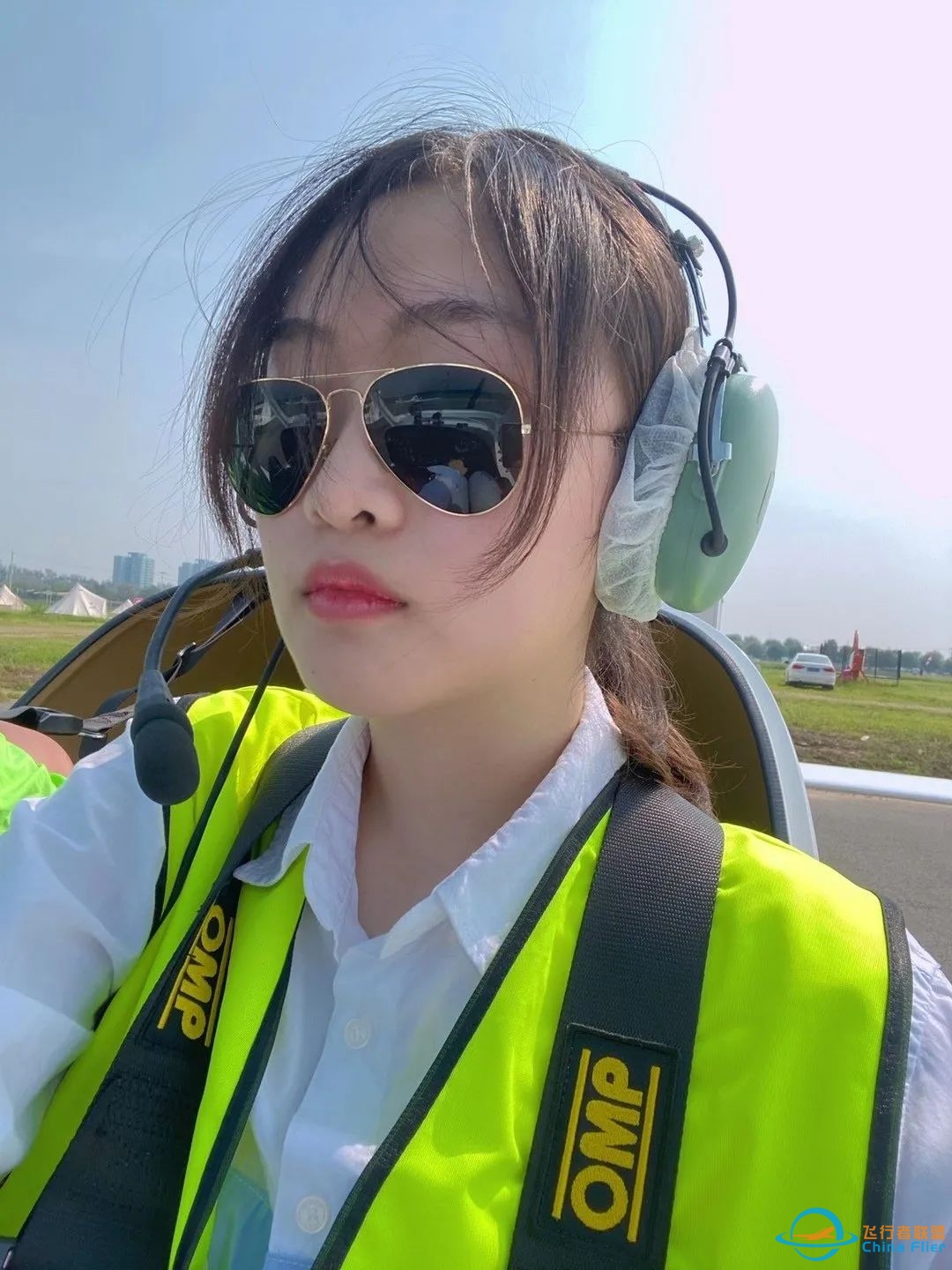
Airport markings & lighting
Markings & Signs
机场分为 towered airport 和 non-towered airport 无塔台机场。
在 towered airport 飞行员需保持 two-way radio communication with ATC;在 nontowered airport,公共交通咨询频率 CTAF(common traffic advisory frequency) is identified in appropriate aeronautical publications.
在管制机场、如果没有 ATC 的许可,滑行过程中,任何时候看到红色的标识牌,都要等待。
Runway 机场跑道
常见跑道包括三种,分别是目视跑道(Visual Runway)、非精密进近跑道(Non-Precision Runway)、精密进近跑道(Precision Runway)。
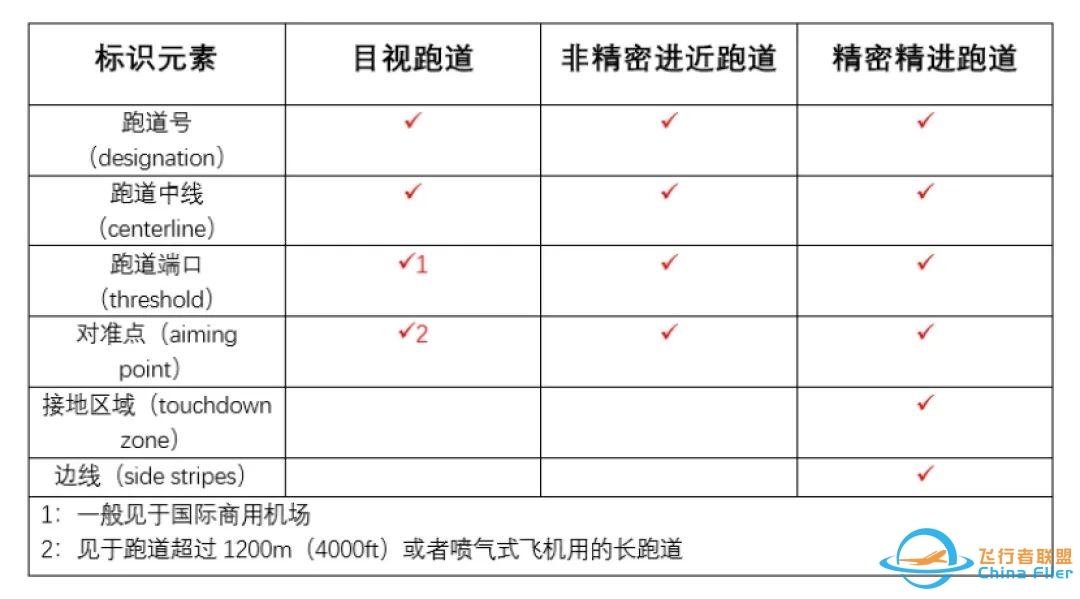
跑道标志一般包括:跑道名称、跑道中心线、跑道入口、着陆点、接地点、跑道边界线等
一般而言,红底色白字体的标识牌为强制性标识牌,用来指示跑道的边界,或进入临界区域,或是禁止航空器进入的区域。
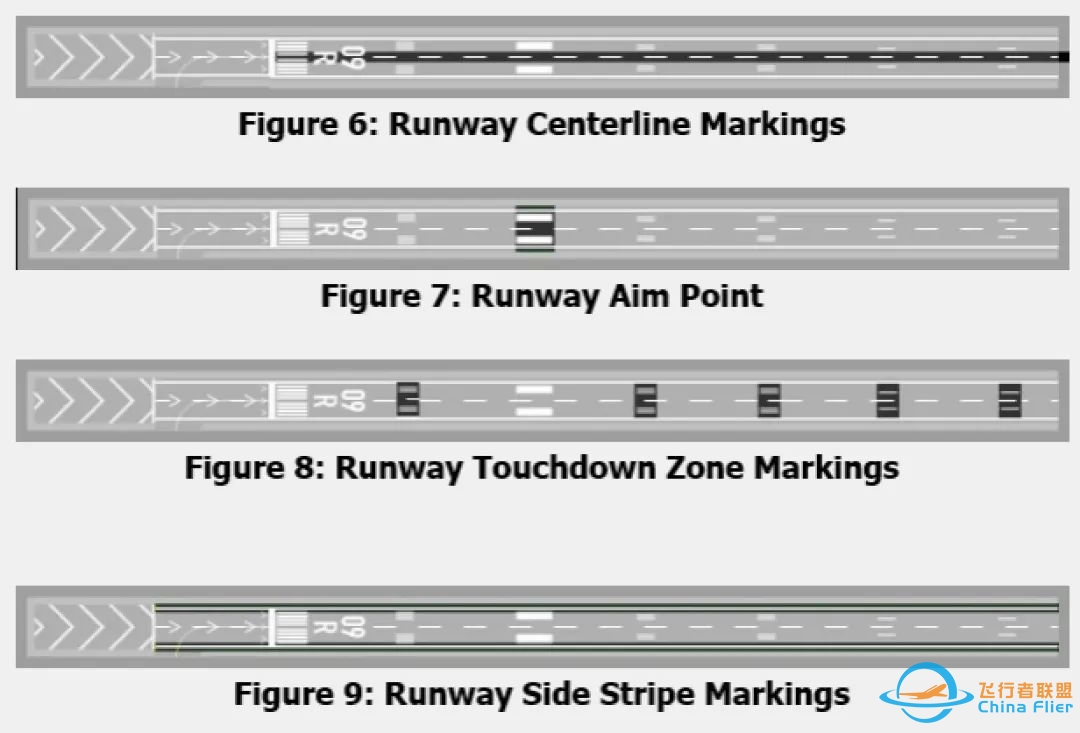
从上到下依次为:跑道中线、对准点、接地带标识、跑道边线

跑道入口标识
跑道的宽度可以通过入口白色线段数判断:
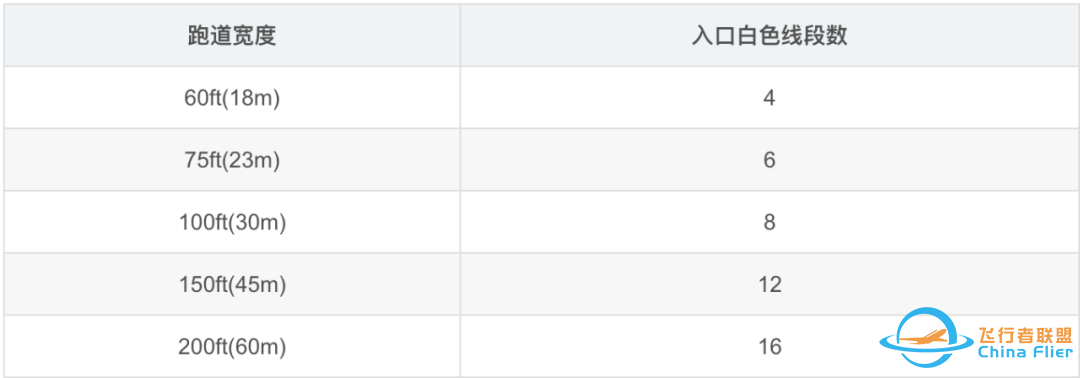
Runway numbers are in reference to magnetic north.
Runway safety area 跑道安全区域
The runway safety area (RSA) is a defined surface surrounding the runway prepared, or suitable, for reducing the risk of damage to airplanes in the event of an undershoot, overshoot, or excursion from the runway.
Aircraft should not enter the RSA without making sure of adequate separation from other aircraft during operations at uncontrolled airports.
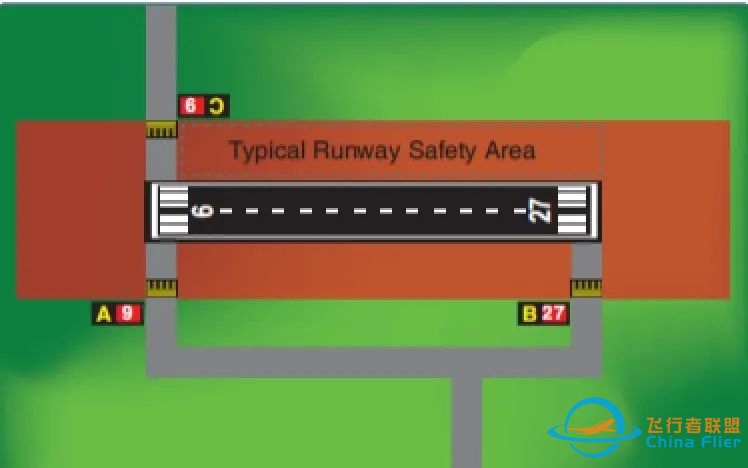
Taxiway 滑行道
Normal Centerline
The continuous yellow taxiway centerline, typically six to twelve inches wide.

Enhanced Centerline 增强型滑行道中心线标志
At some, mostly larger commercial airports, an enhanced taxiway centerline is used to alert pilots they are approaching a runway hold line.
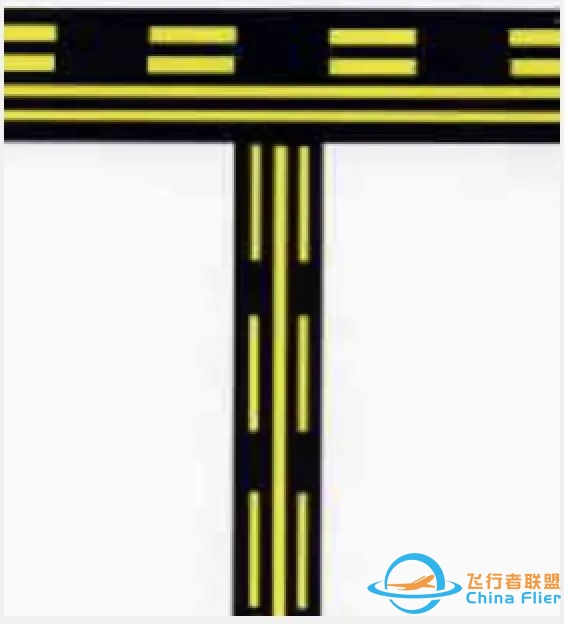
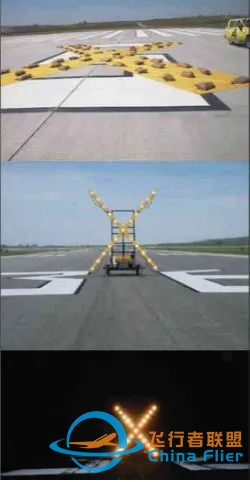
跑道或滑行道关闭/临时关闭的跑道
Surface-painted location and taxiway signs 地面位置标志与滑行道标志
Surface painted location signs are used to supplement location signs located alongside a taxiway.
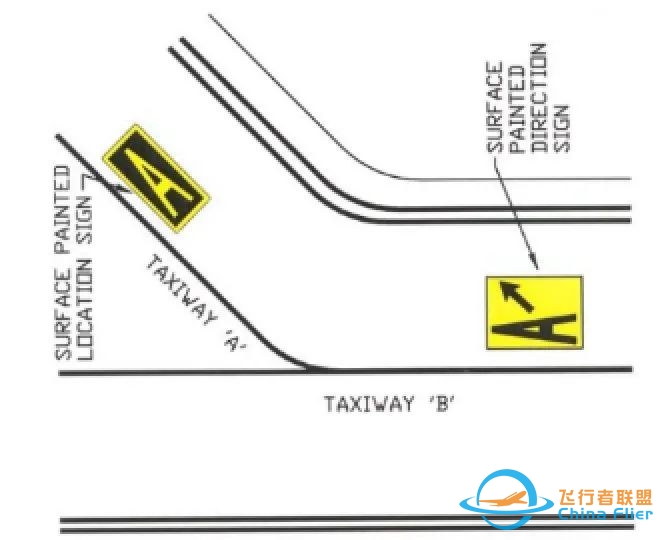
Surface painted holding direction sign
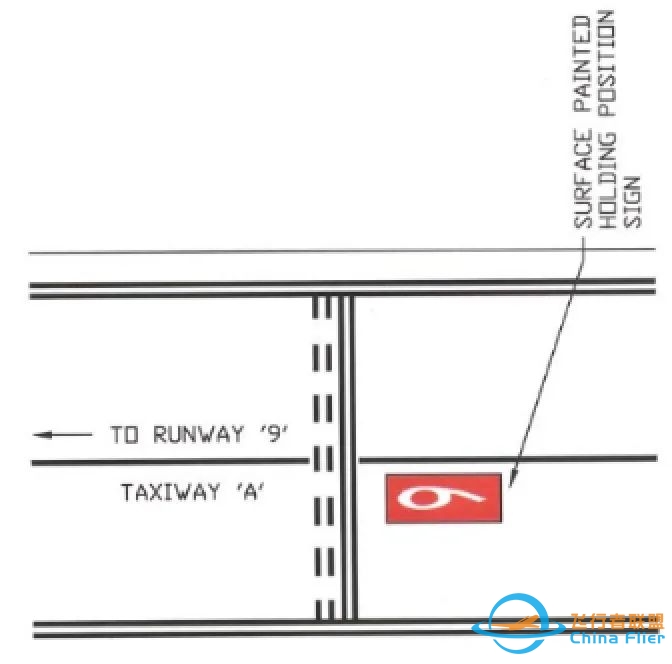
Surface painted taxiway holding direction signs have a red background with white lettering that identify the runway the taxiway is approaching.
The surface painted holding position sign provides additional warning, especially where a taxiway crosses a busy runway and on taxiways 200 feet or more wide.
Runway holding position markings 跑道等待位置标记
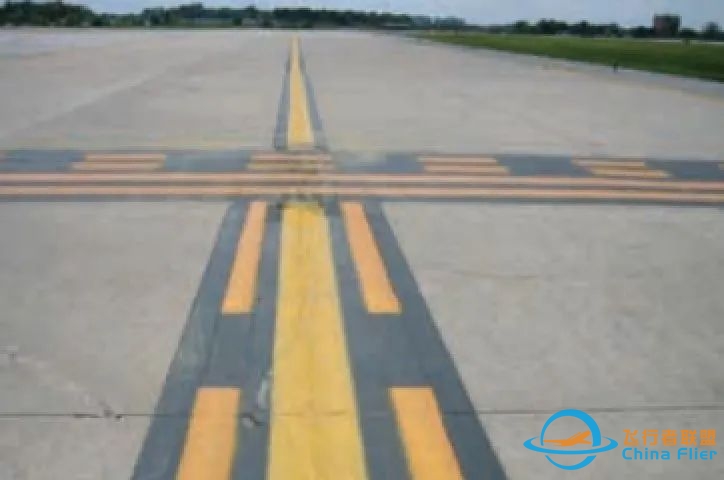
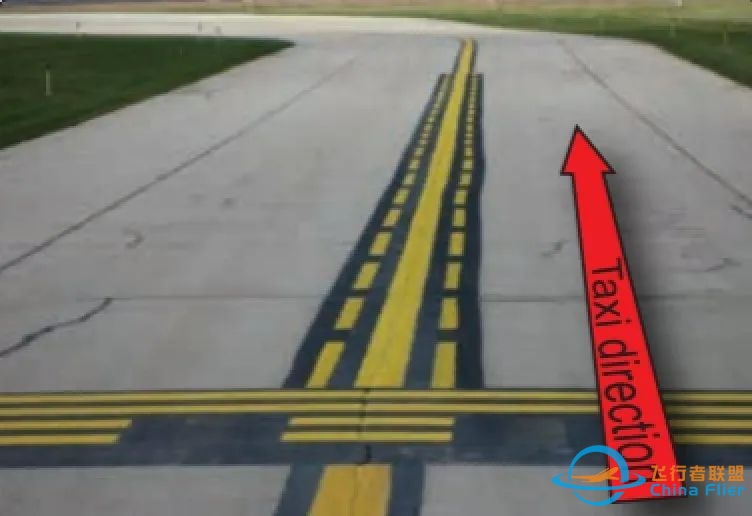
Prior to reaching the solid lines, it is imperative to stop and ensure that no portion of the aircraft intersects the first solid yellow line. Do not cross the double solid lines until a clearance from ATC has been received.
When exiting the runway, the same markings will be seen except the aircraft will be approaching the double dashed lines. In order to be clear of the runway, the entire aircraft must cross both the dashed and solid lines.
Land and Hold Short Operations (LAHSO) 着陆并停止等待运行方式

When simultaneous operations (takeoffs and landings) are being conducted on intersecting runways, Land and Hold Short Operations (LAHSO) may also be in effect.
Taxiway Markings and Signs 滑行道标志和标记牌
Direction signs are normally located on the left side of the taxiway and prior to the intersection.
Taxiway direction signs can also be displayed as surface painted markings.
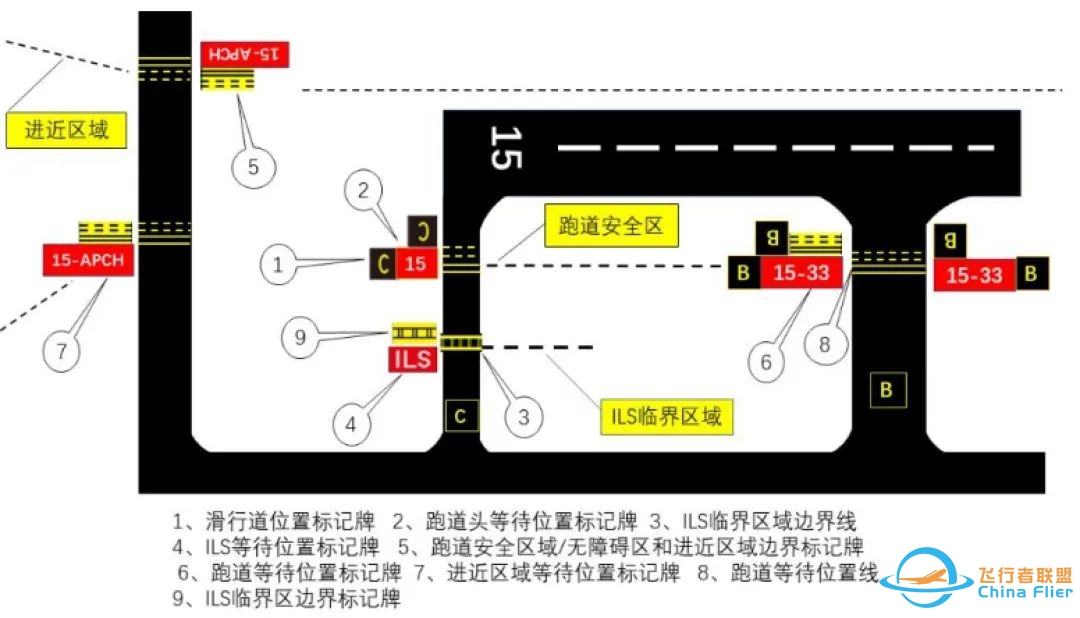
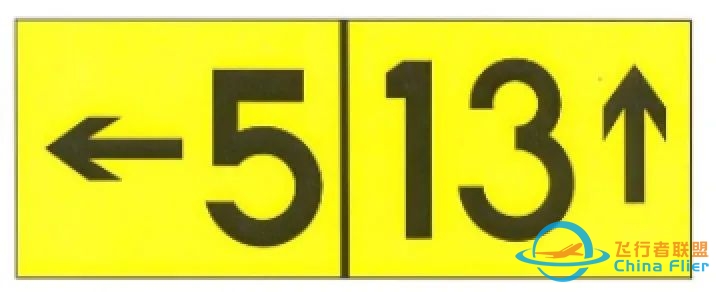
Overview of surface painted holding and safety signs
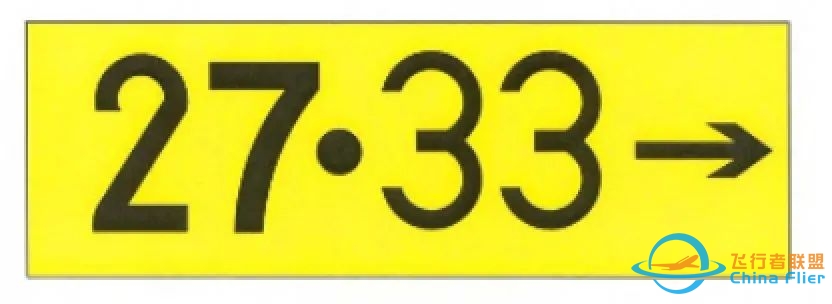
Direction to runways
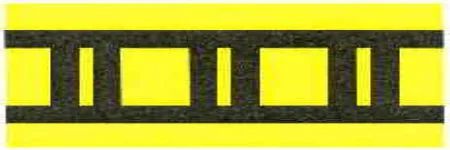
ILS Holding
Often blacktop areas are used to stabilize the earth along taxiways to (1) prevent jet blast from blowing dirt and debris onto the pavement or toward aircraft behind them or (2) to indicate areas that will not support an aircraft.
Taxiway edge markings 滑行道边标志
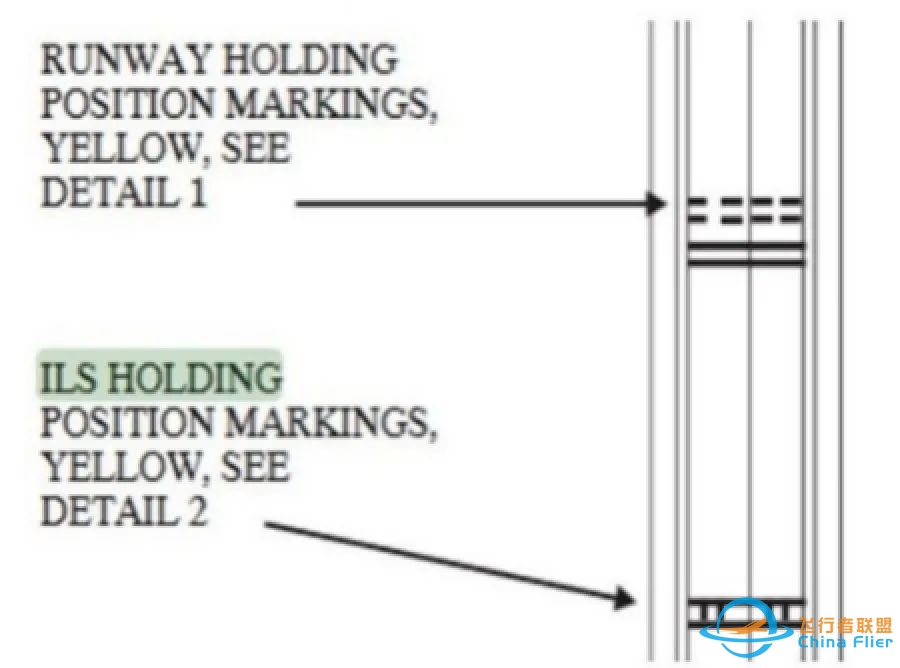
(1) The first hold line may be used when the airport is operating under VFR conditions and landing aircraft are NOT relying on the ILS for landing guidance.
(2) The second hold line is the ILS Holding Position Markings used when aircraft are actively using the ILS for landing guidance (aircraft too close to the runway can interfere with the ILS guidance signal).

Runway exit sign for Taxiway A
ILS Critical Area Boundary Sign(ILS 临界区域标示牌)
The sign has a yellow background with a black inscription with a graphic depicting the ILS pavement holding position marking as shown in
The sign is located adjacent to the ILS holding position marking on the pavement and can be seen by pilots leaving the critical area
The sign is intended to provide pilots with a visual cue ensure “clear of the ILS critical area”
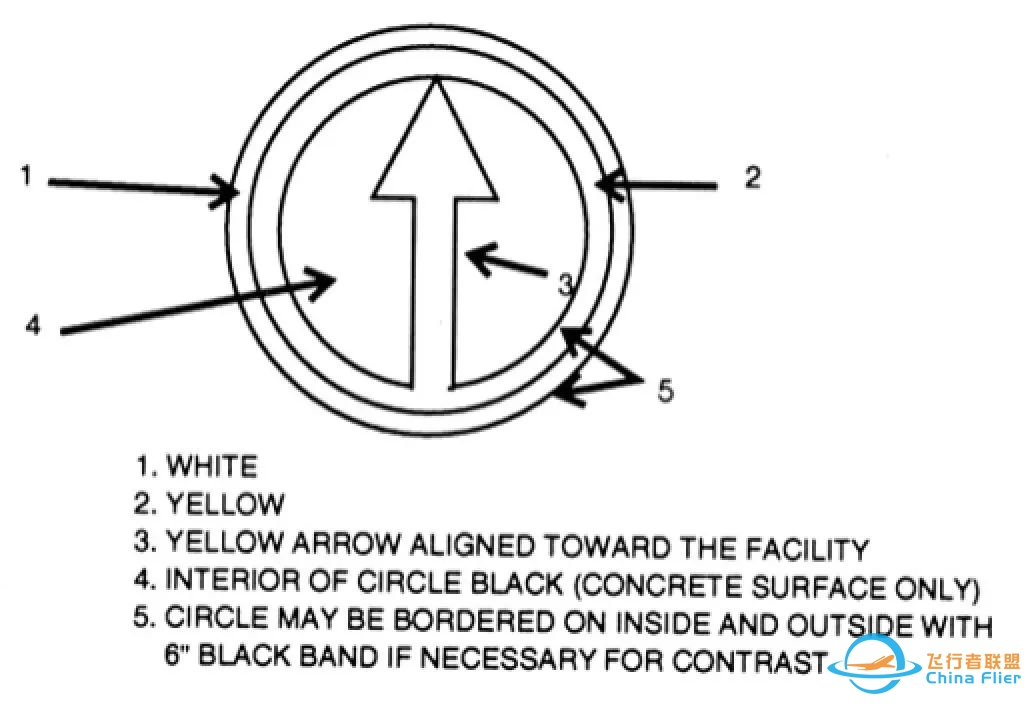
Very-High Omni-Directional Range (VOR) Receiver Checkpoint Markings(VOR 接收机检查点标志)
The VOR receiver checkpoint marking allows the pilot to check aircraft instruments with navigational aid signalsConsists of a painted circle with an arrow in the middle; the arrow is aligned in the direction of the checkpoint azimuthThis marking, and an associated sign, is located on the airport apron or taxiway at a point selected for easy access by aircraft but where other airport traffic is not to be unduly obstructed
Runway Holding Position Sign 跑道等待位置标示牌
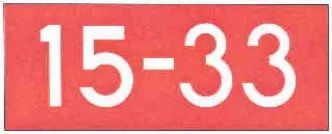
This sign is located at the holding position on taxiways that intersect a runway or on runways that intersect other runways and contains the designation of the intersecting runway
You should never allow any part of your aircraft to cross the runway holding position sign (either a vertical or surface painted sign) without a clearance from ATC. Doing so poses a hazard to yourself and others.

If the sign is located on a taxiway that intersects the intersection of two runways, the designations for both runways will be shown on the sign along with arrows showing the approximate alignment of each runway
Holding Position Sign for ILS Critical Area(ILS临界区等待位置标示)
At some airports, when the instrument landing system is being used, it is necessary to hold an aircraft on a taxiway at a location other than the holding position
In these situations the holding position sign for these operations will have the inscription “ILS” and be located adjacent to the holding position marking on the taxiway
Sign Prohibiting Aircraft Entry into an AreaNo Entry Sign(禁止进入标示牌)
Prohibits an aircraft from entering an area typically, located on a taxiway intended to be used in only one direction or at the intersection of vehicle roadways with runways, taxiways or aprons where the roadway may be mistaken as a taxiway or other aircraft movement surface
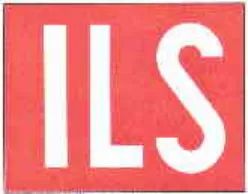

Taxiway Location Sign Collocated with Runway Holding Position Sign
Declared Distances Diagram
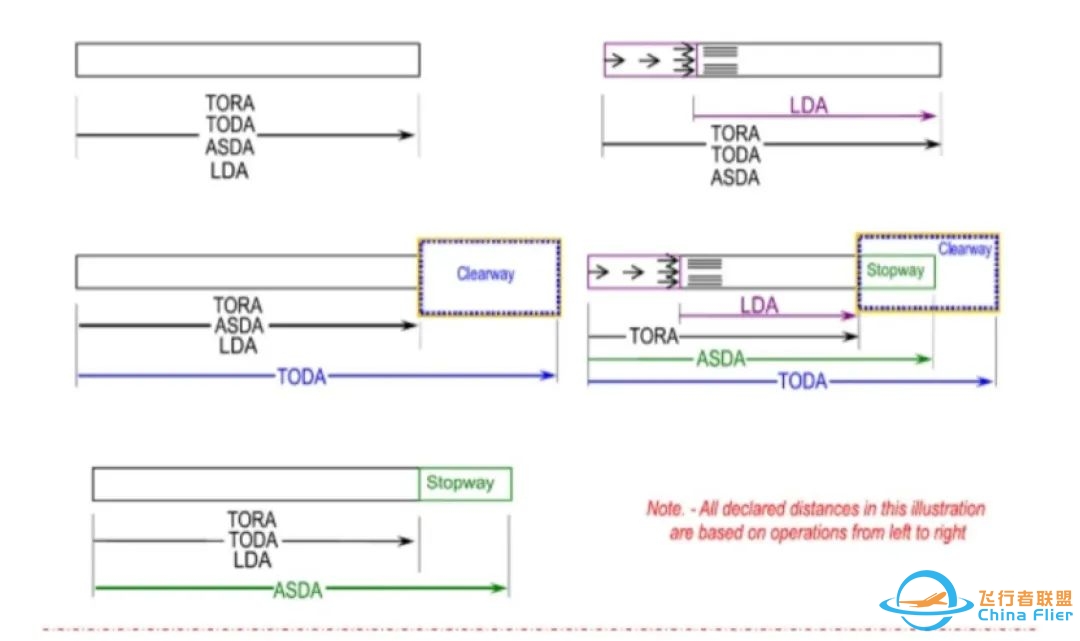
Declared Distances:
Declared distances for a runway represent the maximum distances available and suitable for meeting takeoff and landing distance performance requirements
Takeoff Run Available (TORA)可用起飞滑跑距离:
The runway length declared available and suitable for the ground run of an airplane taking off.
The TORA is typically the physical length of the runway, but it may be shorter than the runway length if necessary to satisfy runway design standards
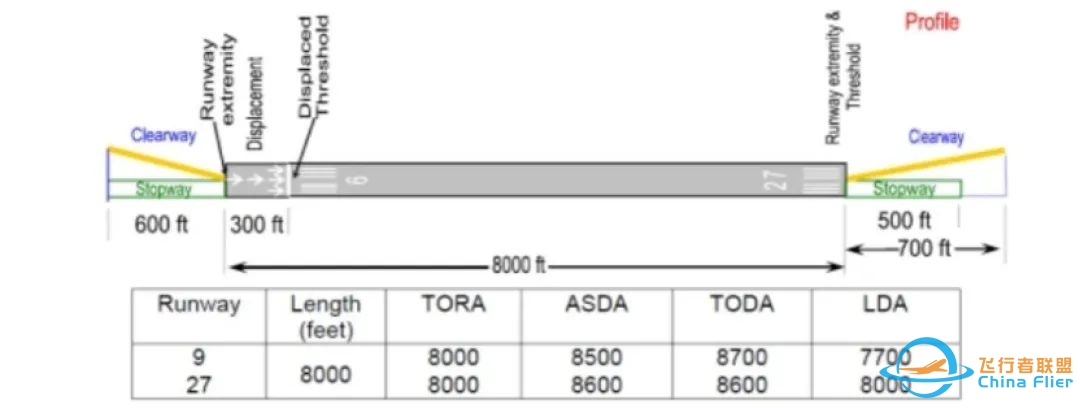
Takeoff Distance Available (TODA)可用起飞距离:
The takeoff run available plus the length of any remaining runway or clearway beyond the far end of the takeoff run available
Accelerate-Stop Distance Available (ASDA)可用加速停止距离:
The runway plus stopway length declared available and suitable for the acceleration and deceleration of an airplane aborting a takeoff
The ASDA may be longer than the physical length of the runway when a stopway has been designated available by the airport operator, or it may be shorter than the physical length of the runway if necessary to use a portion of the runway to satisfy runway design standards.
Landing Distance Available (LDA)可用降落距离:
The runway length declared available and suitable for a landing airplane
The LDA may be less than the physical length of the runway or the length of the runway remaining beyond a displaced threshold if necessary to satisfy runway design standards.
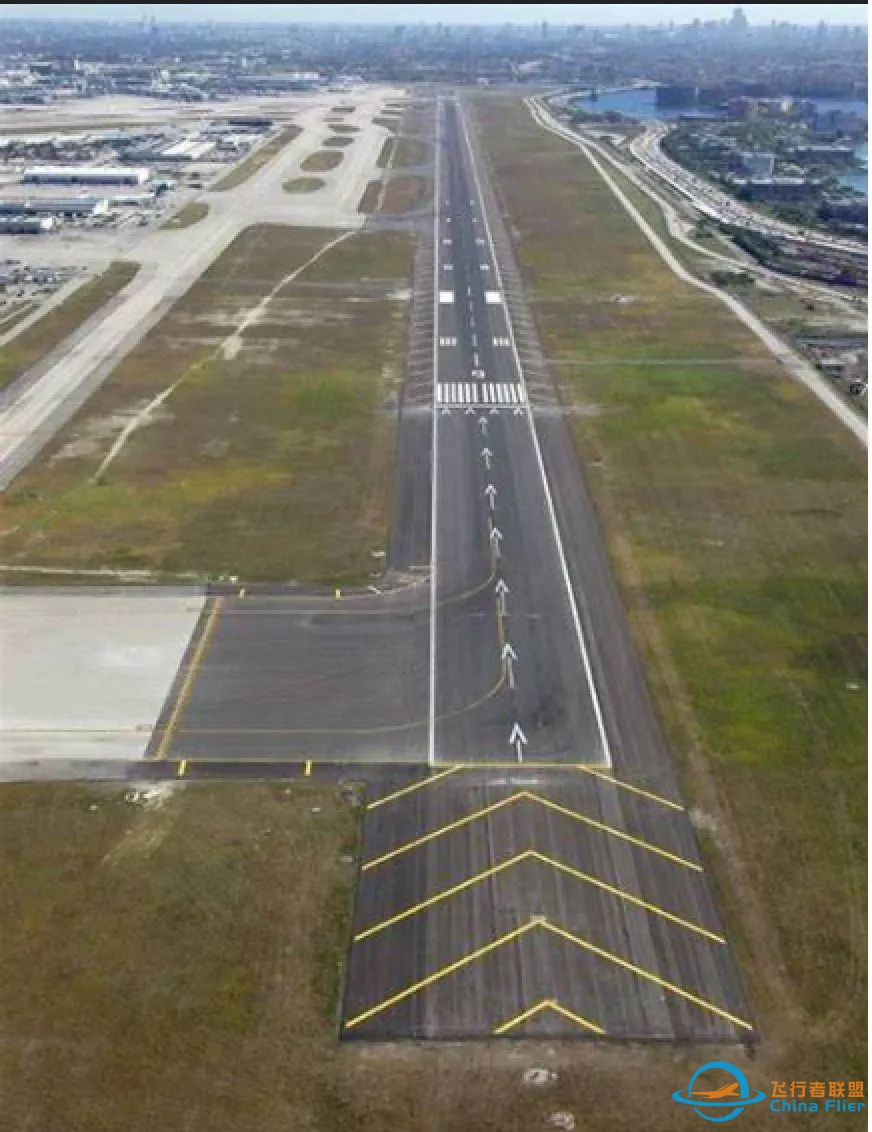
Chevron Markings Indicate areas of pavement aligned with the runway that are unusable for taxi, takeoff, or landing. Chevrons cover blast pads or stopways, which are constructed to protect areas from erosion caused by jet blast and to provide extra stopping distance for aircraft (stopways).
Airport lighting 机场灯光
一般而言,跑道中线是白色的一条虚线,跑道边线是白色的单实线。通过观察跑跑道入口标志的线条的数量便可知道跑道的宽度。
标准的中线灯结构(CL-Standard)为白色灯,然后是红色和白色交替灯(离跑道端3000-1000 ft),最后 1000 ft 为红色灯。
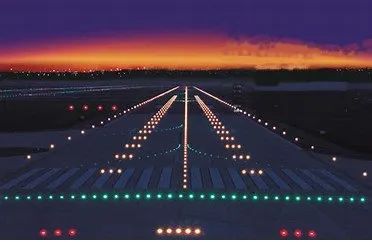
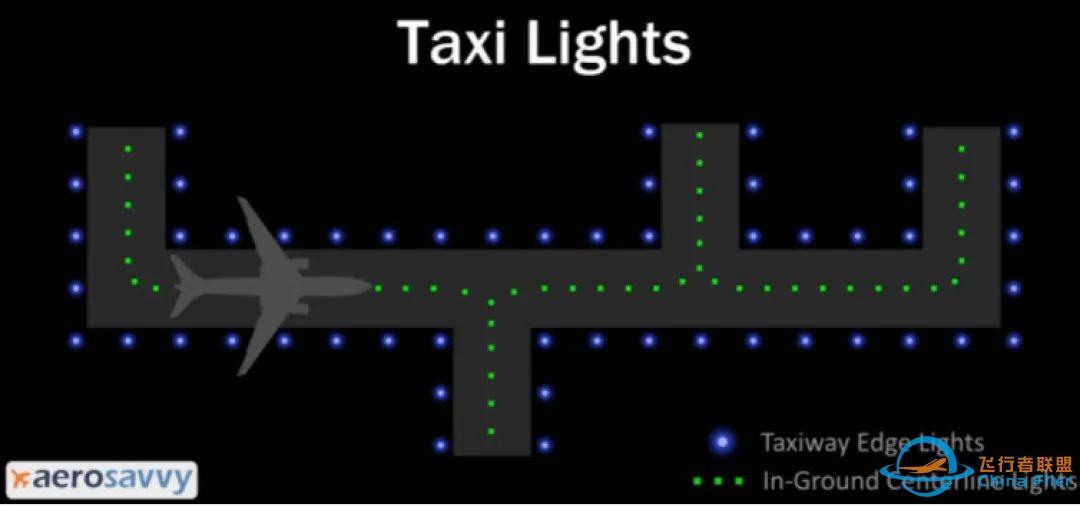
Blue Lights: Taxiway edge lights are always blue. The blue taxi lights are easy to spot from the terminal and are often the first airport lights seen by passengers.
Green Lights: Green in-ground centerline lights are often installed at busy airports and airports that experience bad weather to enhance taxi guidance and safety. Unlike the blue lights used to identify the taxiway edges, green centerline lights are very bright. Pilots can see and follow them in the worst weather conditions, day or night.
Airport Beacon 机场信标
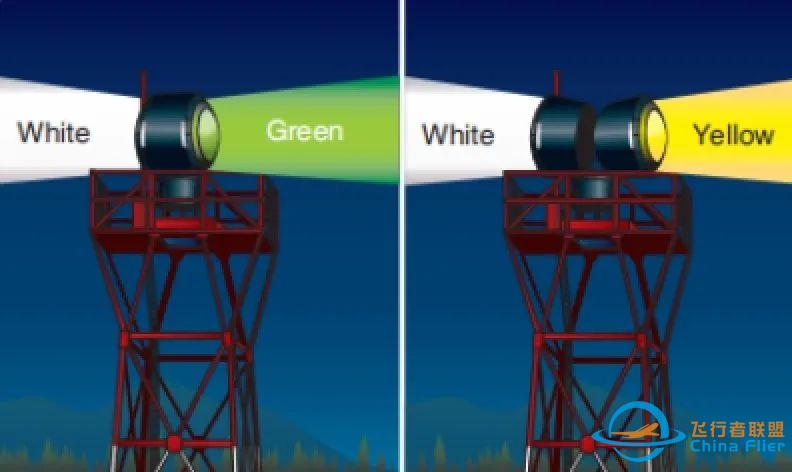
Flashing white and green for civilian land airportsFlashing white and yellow for a water airportFlashing white, yellow, and green for a heliportTwo quick white flashes alternating with a green flash identifying a military airport
Visual Approach Slope Indicator (VASI) 目视进近坡度指示系统
VASI installations are the most common visual glidepath systems in use.
There are 2-bar and 3-bar VASIs. The 2-bar VASI has near and far light bars and the 3-bar VASI has near, middle, and far light bars.
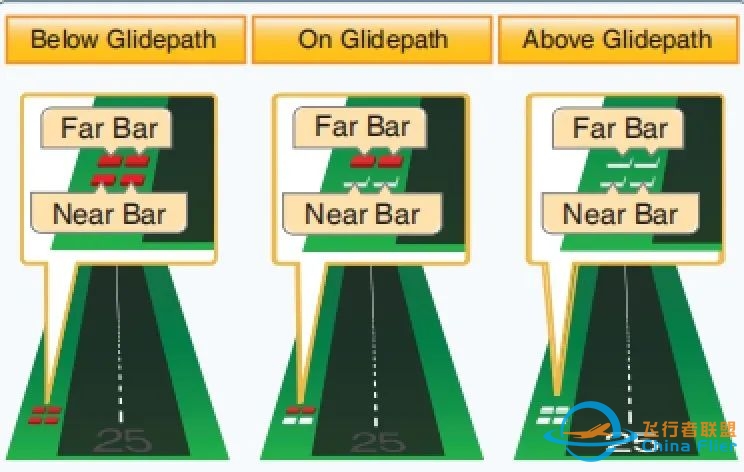

The precision approach path indicator (PAPI) uses light units similar to the VASI but is installed in a single row of either two or four light units. These lights are visible from about 5 miles during the day and up to 20 miles at night.
Safe obstruction clearance is typically provided within plus or minus 10° of the extended runway centerline and to 3.4 NM from the runway threshold. Descent, using the PAPI, should not be initiated until the aircraft is visually aligned with the runway.
The visual glidepath is typically set at 3°, although the angle may be as high as 4.5° to give proper obstacle clearance at some locations.

Runway End Identifier Lights (REIL) 跑道末端识别灯
Runway end identifier lights (REIL) are installed at many airfields to provide rapid and positive identification of the approach end of a particular runway.
Runway edge lights outline the edges of runways during periods of darkness or restricted visibility conditions. These lights are white, except on instrument runways yellow replaces white on the last 2,000′ or half the runway length, whichever is less, to form a caution zone for landings.
Runway threshold lights mark the ends of the runway emit red light toward the runway to indicate the end of runway to a departing aircraft and emit green outward from the runway end to indicate the threshold to landing aircraft.
Pilot Control of Airport Lighting| Key Mike | Function | | 7 times within 5 seconds | Highest intensity available | | 5 times within 5 seconds | Medium or lower intensity (lower REIL or REIL off) | | 3 times within 5 seconds | Lowest intensity available (lower REIL or REIL off) |

Runway Entrance Lights (REL) are in-pavement, red lights located along the taxiway centerline. These lights are focused toward the pilot at the hold line. When activated, the lights indicate high-speed traffic on the runway or an aircraft on final approach within the activation area.
Takeoff Hold Lights (THL) consist of a double-row of in-pavement, red lights aligned on either side of the runway centerline lighting. These lights are focused toward the “line up and wait” point. THLs illuminate for an aircraft in position for departure or departing when there is another aircraft or vehicle on the runway or about to enter the runway. Once that aircraft or vehicle exits the runway, the THLs extinguish.
Runway Intersection Lights (RIL) have the appearance of THL but are located atrunway intersections. These lights illuminate when there is a conflict with traffic operating on an intersecting runway. Pilots who observe the red lights should operate according to their best judgment.
The Final Approach Runway Occupancy Signal (FAROS) is communicated by flashing of the PAPI lights to indicate to a pilot on an approach that the runway is occupied and that it may be unsafe to land. The pilot must contact ATC for resolution by 300′ AGL. If the PAPI continues to flash, the pilot must execute an immediate go-around and contact ATC at the earliest possible opportunity.
Obstruction Lights 障碍物标识灯
Red obstruction lights—flash or emit a steady red color during nighttime operations, and the obstructions are painted orange and white for daytime operations.High intensity white obstruction lights— flash high intensity white lights during the daytime with
the intensity reduced for nighttime
Dual lighting—a combination of flashing red beacons and steady red lights for nighttime operation and high intensity white lights for daytime operations.
The Runway Status Lights (RWSL) System 机场跑道状态灯光系统 is designed to provide a direct indication to you that it is unsafe to enter a runway, cross a runway, or takeoff from or land on a runway when the system is activated.
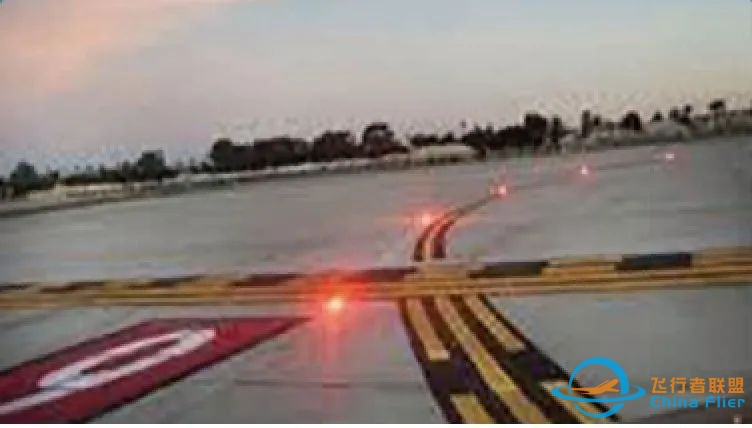
Runway Entrance Lights (REL) 跑道入口灯
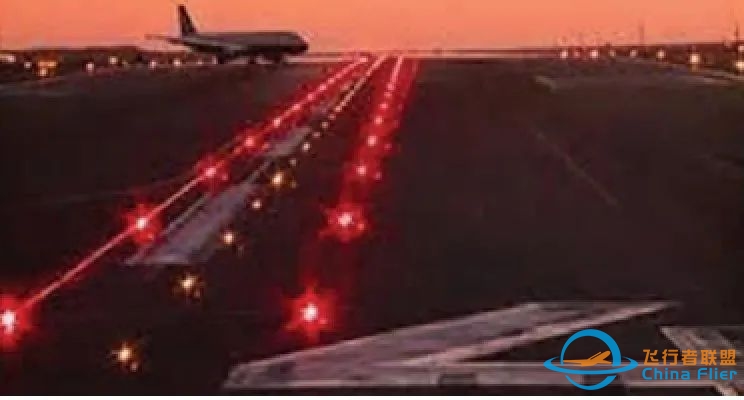
Takeoff Hold Lights (THL) 起飞等待灯
REL provide a warning to aircraft crossing or entering a runway from intersecting taxiways that there is conflicting traffic on the runway.
THL provide a warning signal to aircraft in position for takeoff that the runway is occupied and it is unsafe to take off.
Wind Direction Indicators 风向标
It is important for a pilot to know the direction of the wind.
The wind direction indicator can be a wind cone, wind sock, tetrahedron, or wind tee. These are usually located in a central location near the runway and may be placed in the center of a segmented circle, which identifies the traffic pattern direction if it is other than the standard left-hand pattern.
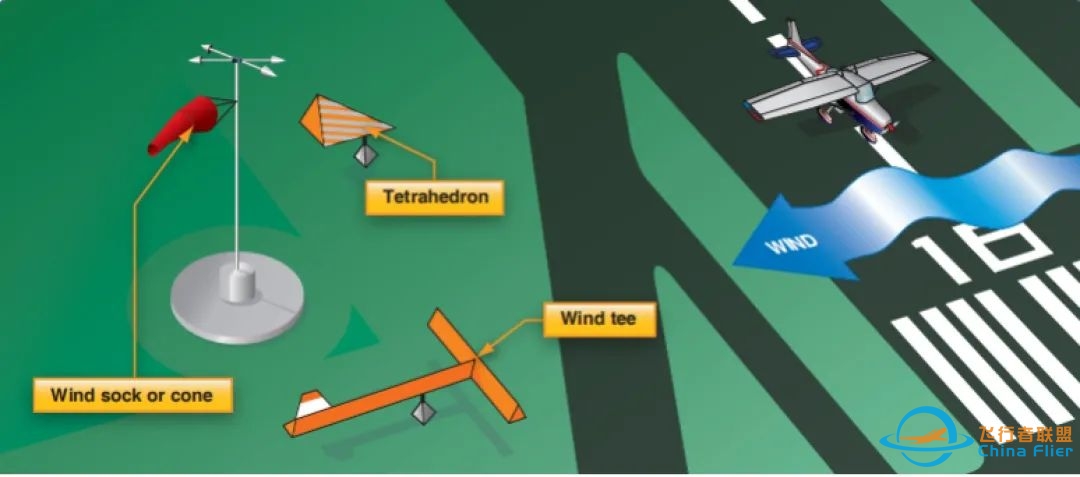
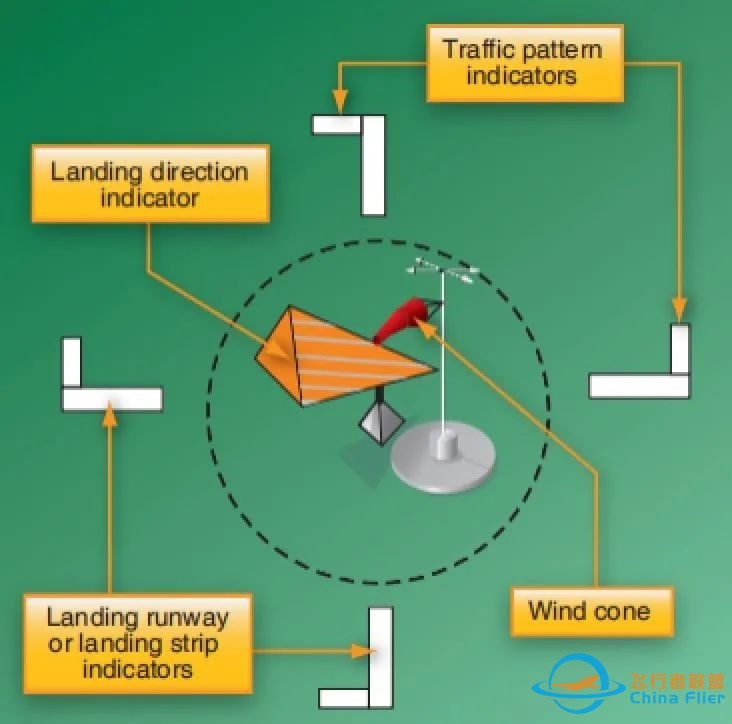
The segmented circle consists of the following components: wind direction indicators, landing direction indicators, landing strip indicators, and traffic pattern indicators.
A tetrahedron is installed to indicate the direction of landings and takeoffs when conditions at the airport warrant its use. Pilots are cautioned against using a tetrahedron for any purpose other than as an indicator of landing direction. At airports with control towers, the tetrahedron should only be referenced when the control tower is not in operation.
Landing strip indicators(着陆跑道指示器) are installed in pairs and are used to show the alignment of landing strips.
Traffic pattern indicators are arranged in pairs in conjunction with landing strip indicators and used to indicate the direction of turns when there is a variation from the normal left traffic pattern.

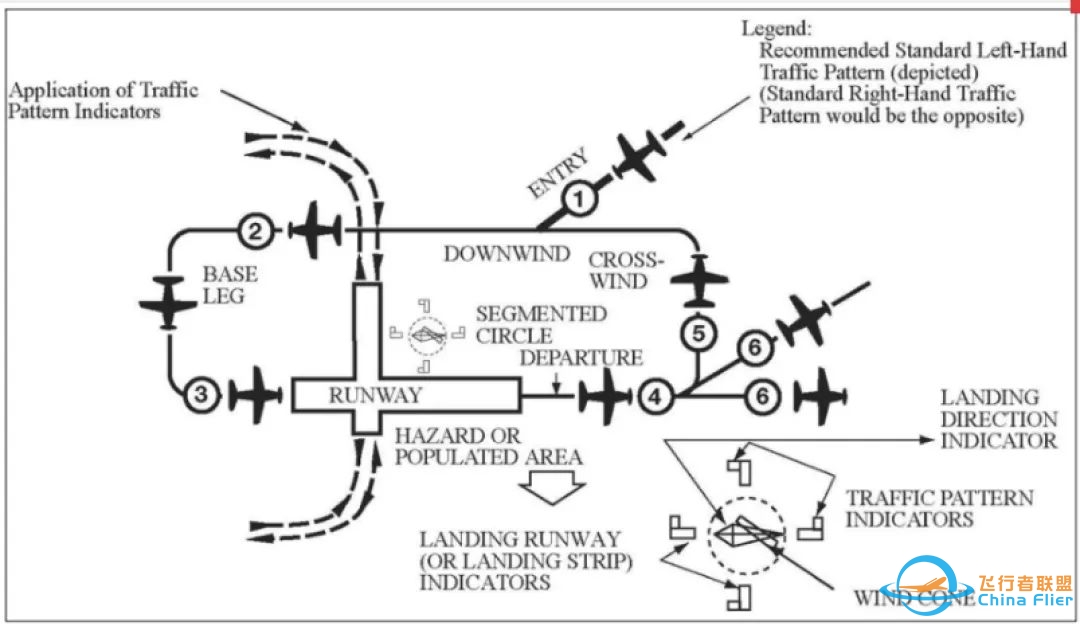
Single runway
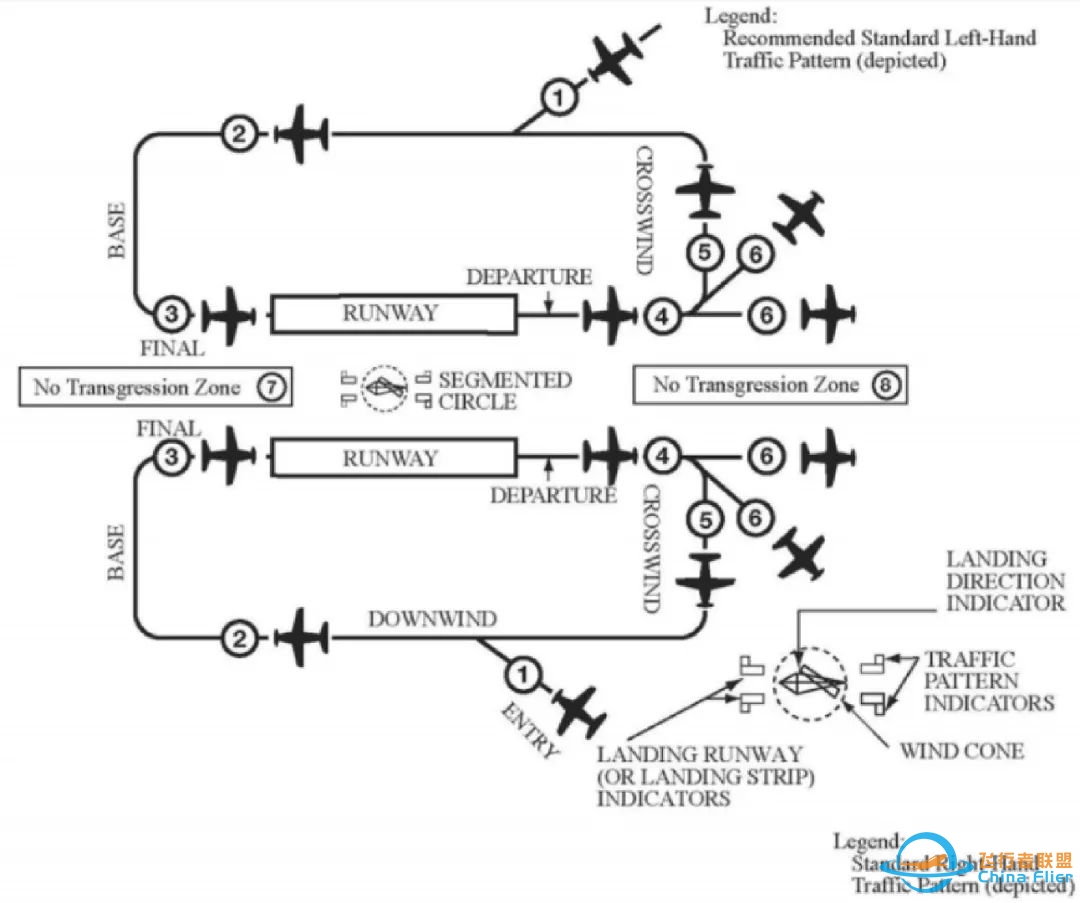
Parallel runway
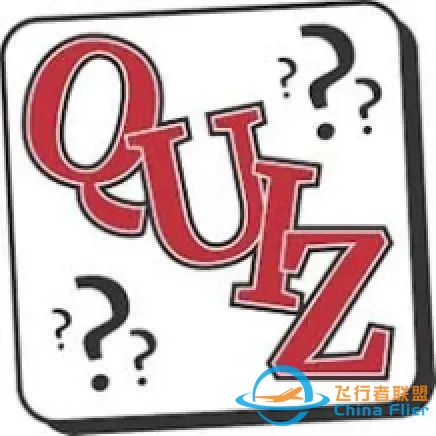
Review:Thunderstorm
1.Thunderstorms are associated with (stratus/cirrus/stratocumulus/cumulonimbus) clouds.2.Does lightning cause thunder, or vice versa?3.All thunderstorms have (lightning/rain/hail).4.The requirements for the formation of a thunderstorm are (moist/ dry) air, a (steep/weak) environmental lapse rate, and a (lifting/sinking) action.5.A steep lapse rate means that the lapse rate is (high/low) and that rising air will tend to keep rising.6.Name the three stages of a typical thunderstorm.7.The cumulus stage of a thunderstorm is characterized by (updraughts/ downdraughts/ both updraughts and downdraughts).8.The growth rate of raindrops is enhanced by (updraughts/downdraughts).9.The mature stage of a thunderstorm is characterized by (updraughts/ downdraughts/ both updraughts and downdraughts).10.The dissipating stage of a thunderstorm is characterized by (updraughts/down draughts/both updraughts and downdraughts).11.Rain falling from the base of a storm cloud is an indication that (updraughts/ down draughts) have developed, and that the …..stage in its life cycle has commenced.12.Thunderstorms reach their greatest intensity in the….stage13.The most severe flying conditions are often found in…lines, which should be avoided.14.The most hazardous flying conditions associated with a thunderstorm are due to (lightning/static electricity /windshear and turbulence/hail/reduced visibili15.A non-frontal narrow band of active thunderstorms that often develop ahead of a cold front is known as a…16.The start of rain indicates the beginning of the …..stage of a thunderstorm.17.Hail is most likely to be associated with what type of clouds?
Attention
Students of grade 2019 need to send a screenshot to wechat group when you finish the test before December 18st.
2019 级学员需要在12月18日前把答案截图发送到微信群(飞行学院 2020 春地面理论群


作者
洪华逊
北航飞院 2017 级飞行技术专业学员
多次获得学习优秀奖
美国 UND 航系菲尼克斯校区学院
中国国际航空公司飞行总队飞行员

Always Think Ahead
很荣幸受到北航飞院地面理论课,CFC 模拟机实验室负责水恒涌老师邀请,在这里和大家分享一下在美国 UND 航校凤凰城校区学习的一些经验与心得。
首先,我想告诉大家的是,UND 航校的优秀的设施和教员配置,完善而详细的课程大纲和 SP&P(safety procedure and policy)都是大家去选择 UND 航校的理由。而在菲尼克斯校区更是一年 365 天都能飞,只是夏天会有几天的时间超温和雷暴。飞机无论是单发的塞斯纳 172,piper archer,还是双发的 seminole 都是配备 G1000 航电系统,集成指示信息,降低飞行工作载荷的同时,还能显示更多信息,如 ADS-B,GNSS 等,来提高飞行安全。虽然现在暂停了向美送培,但希望在疫情之后,大家积极去参加 UND 航校的面试。
对我而言,尽管在航校有过五个教员,但是他们每个人都告诉过我“always think ahead”。
私照阶段,这意味着在做 Turn around a point 和 S-turn 时去不停的观察地标去判断位置,考虑不同方位的风的影响,在做 Stall 之前,把自己一会要做什么,怎么做,统统在脑子里过一遍,如何去 set up,做 radio call,要准备充分,不能觉得这个机动做过很多遍就很着急的开始。在 XC 的时候,快到下一个检查点的时候就要去准备好做 dead rockening 的东西,而不是一边转弯改变到下一个航向,一边找地标做 pilotage,一边再去记录时间,算出 GS,ATA,ETA。快到目的地机场时去想一会怎么脱离跑道,滑行到 ramp,提前把机场图准备好。
除此之外,“always think ahead”对于提升陆空通话能力也有很明显的作用。在刚刚到美国的时候,还没有完全适应语言环境,对于私照学员,流利的陆空通话显得格外困难,而这又是私照阶段重点考察项目,所以在这时, always think ahead 就能起到“弯道超车”的效果,虽然口语能力不够优秀,但是可以去预测 ATC 的指令,当脑海里已经知道 ATC 会说什么的时候,自然就不会那么紧张,也不会错过很多陆空对话的内容了。最常见的,莫过于在 takeoff briefing 时要做 taxi briefing,尤其是在不熟悉的机场,这样会有效的避免复述 taxi 指令时,错失很多内容。若以 gateway 机场举例,在 holding short of G at hold bay 时,能够得到的指令无非就是:
1.hold short of runway 12R at G
2.runway 12R,clear for take off.
3.cross runway 12R at G,hold short of 12C.
4.stand by
如果把这些最可能得到的指令都能想到了,就不会在边做 readback 边做 before takeoff checklist 时手忙脚乱或者需要很长时间来反应了。同样的办法也适用于仪表阶段的 clearance read back 等,就不赘述了。
对我而言,在刚接触仪表进近时,总是会觉得时间不够用,担心自己飞错高度或者没调整好飞机形态,一直到单发商阶段,我的商照教员告诉我同样要 think ahead, 并且他就告诉了我一种准备仪表进近的方法
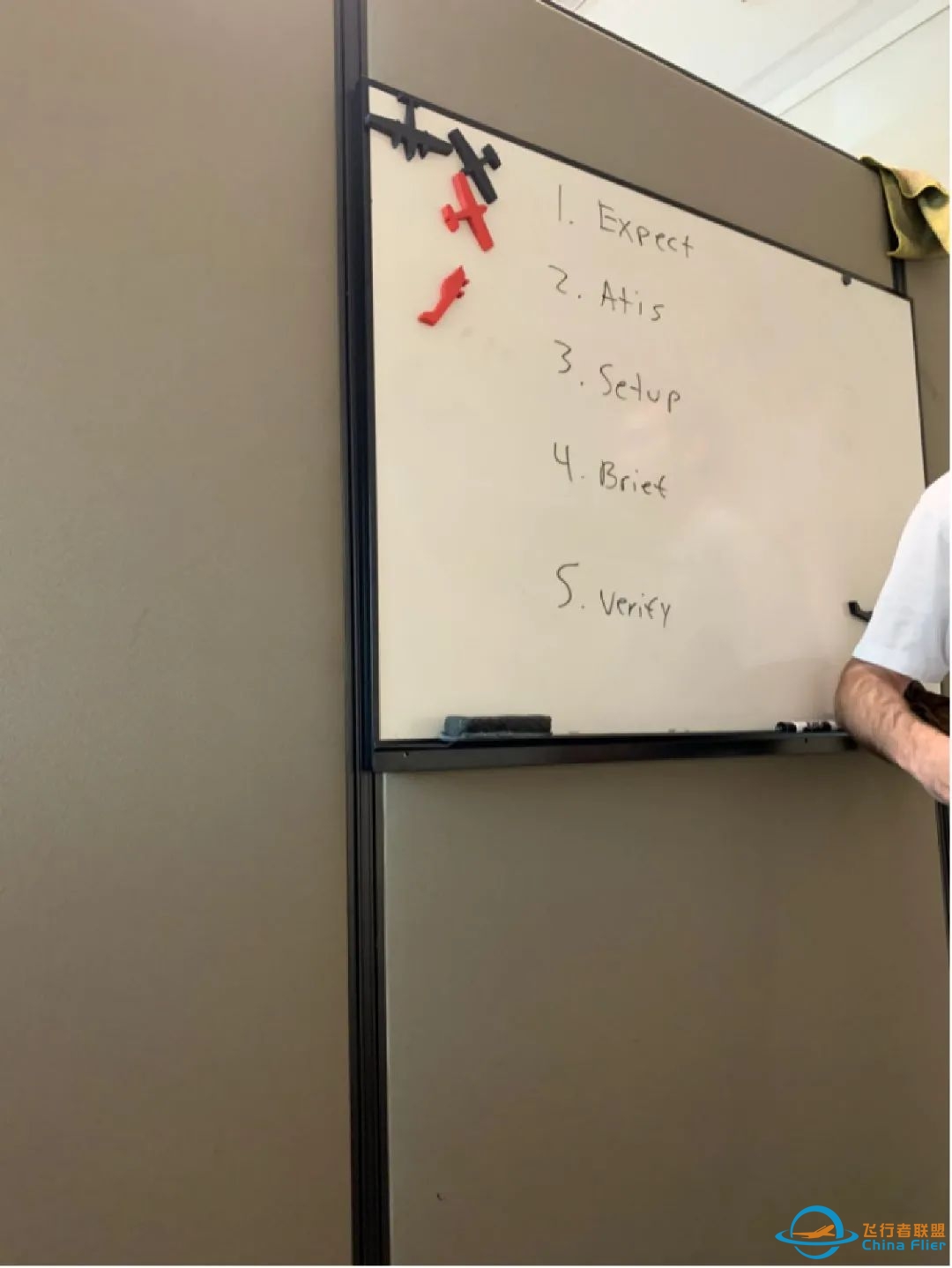
1.先去根据 ATC 的习惯以及天气等,去预测将会得到什么指令
2.在首次和 ATC 建立联系前,就需要得到 ATIS
3.设置好 minimum,vref,打开进近图等即为 setup
4.briefing 的同时要 verify 刚刚 setup 得是否有问题,二次检查
对于仪表飞行,尤其是高速飞机,在适当地提前准备好仪表进近,做完 approach briefing 和 descent briefing 是十分有必要的,不至于出现“飞机操控你”的情况。
希望这些小经验能对大家今后的飞行有些许帮助,在国外的兄弟们注意防护,早日回国!
- END -

往期推荐

PHAK 云端课堂 & 训练手记 | 民用航空气象预报(二)
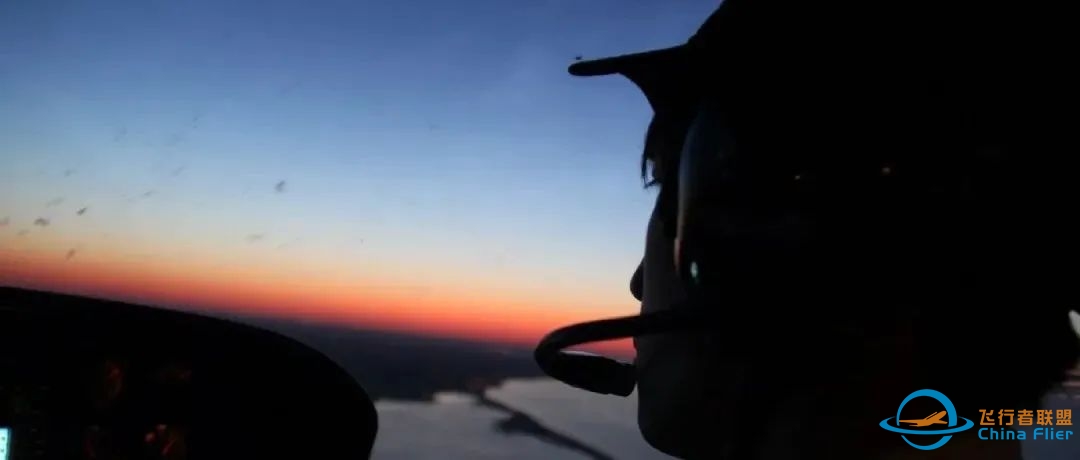
PHAK 云端课堂 & 训练手记 | 民用航空气象预报

PHAK 云端课堂 & 训练手记 | Why do we have weather on Earth(II)
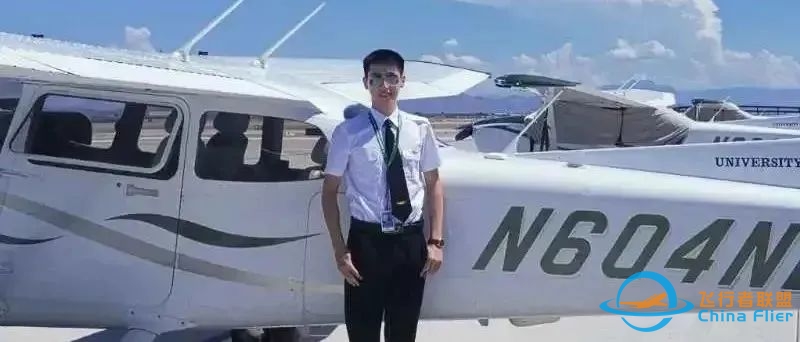
PHAK 云端课堂 & 训练手记 | Why do we have weather on Earth(I)

PHAK 云端课堂 & 训练手记 | Aircraft Performance(下)

PHAK 云端课堂 & 训练手记 | Aircraft Performance(上)
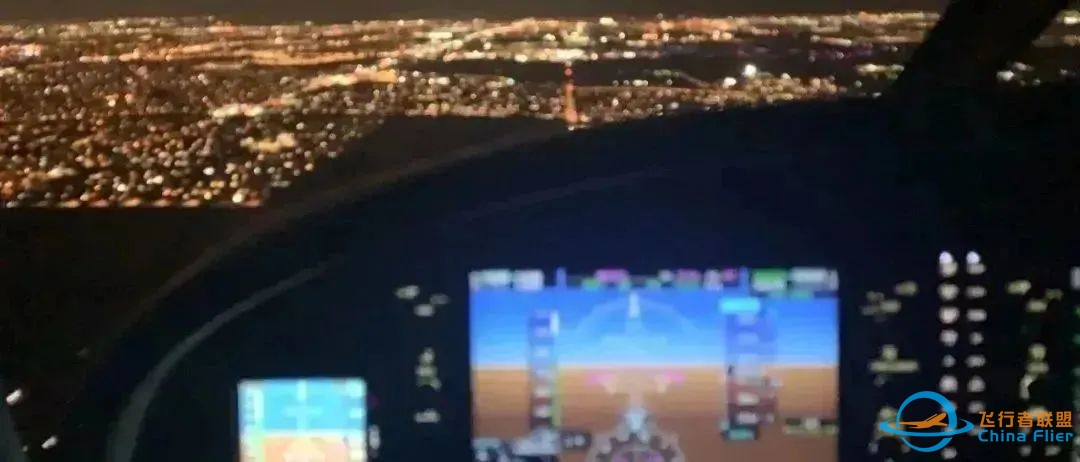
CFC开课通告 & PHAK 云端课堂 | 模拟机课程来了!!!

PHAK 云端课堂 | 重量与平衡知多少
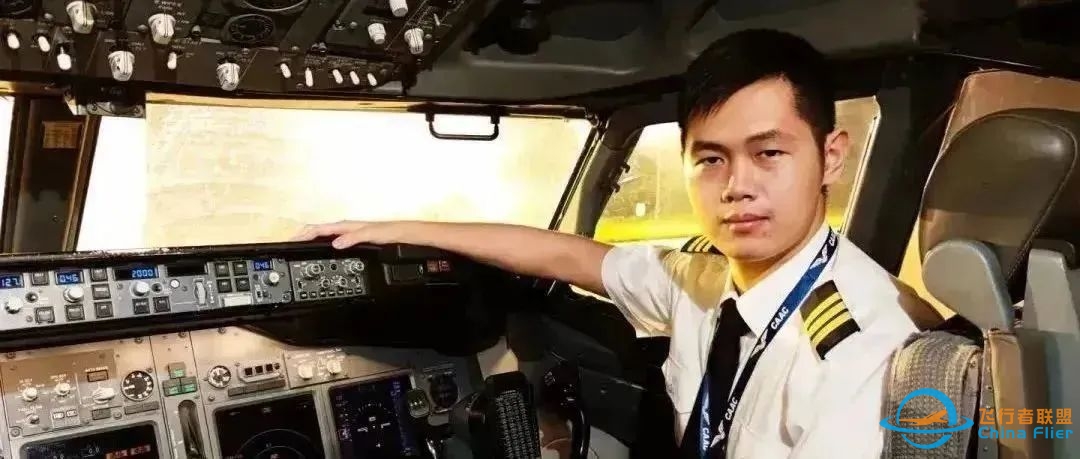
PHAK 云端课堂 & 训练手记 | Flight Instrument (II)
PHAK 云端课堂 & 训练手记 | Flight Instrument (I) CFC 工作汇报 & 训练手记 PHAK云端课堂 x 训练手记 | 细学,精飞,对人,对己 PHAK云端课堂 x 训练手记 | Chapter 7 - Aircraft Systems:Pressurized Cabin PHAK云端课堂 x 训练手记 | Chapter 7 - Aircraft Systems: Turbine Engine PHAK云端课堂 x 训练手记 | Chapter 7 - Aircraft Systems: Engine PHAK云端课堂 x 训练手记 | Chapter 6 - Flight Controls PHAK云端课堂 x 训练手记 | 升力原理知多少 PHAK云端课堂 x 训练手记 | Chapter 5 - Aerodynamics (III) PHAK云端课堂 x 训练手记 | Chapter 5 - Aerodynamics ( II ) 训练手记|欲穷千里,步步成踪,登顶可期 训练手记|对未知的一切,都顺其自然
· END ·
本期作者|马钰辰 洪华逊编辑| 梁宇轩责任编辑|水恒涌
王 丹 曾健鹏
(校稿与技术支持)
©北航飞院CFC & 航小飞工作室
联合出品


转一转

赞一赞
看一看 |
|